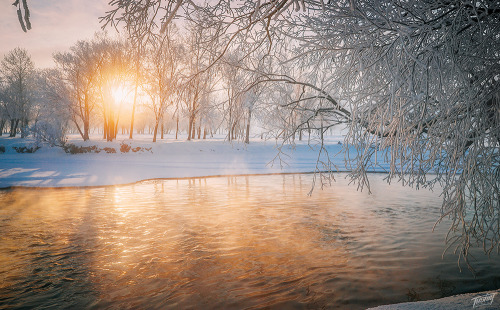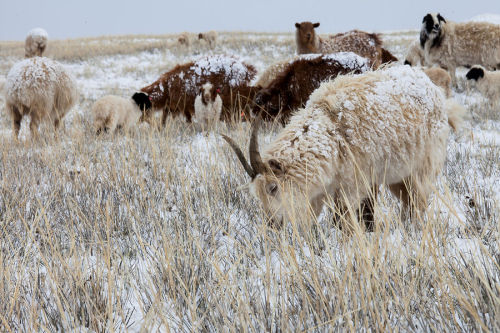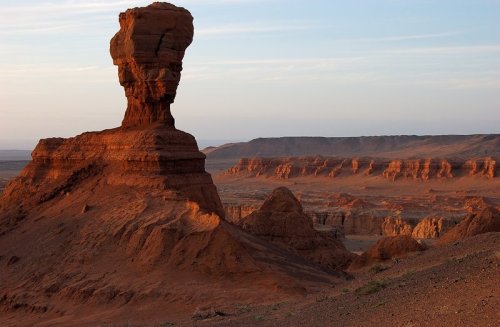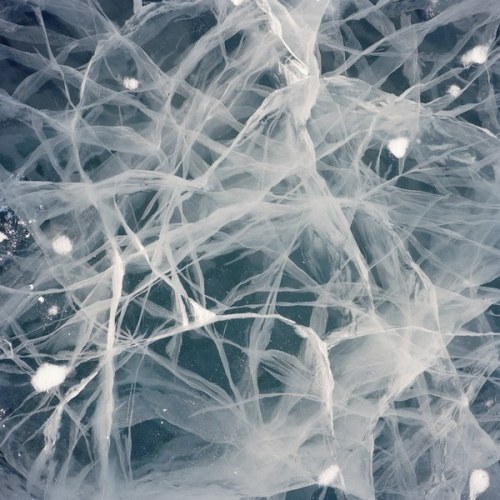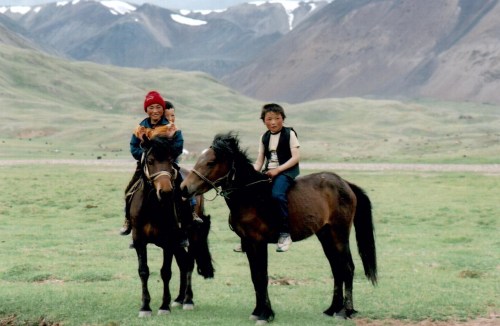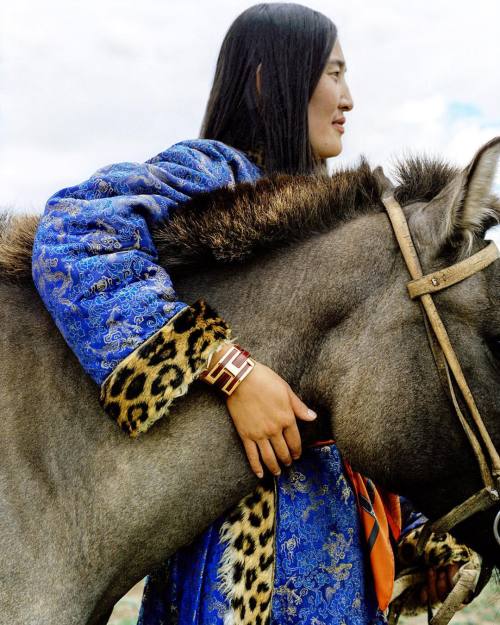#mongolia
Mongolia’s December 2016 livestock census annual livestock census counted about 28 million sheep, 26 million goats, 4 million cows, and 6 million other livestock (camels, yaks, khainags (half cow, half yak), reindeer, and horses). This is the highest total ever recorded, which is good news for herders making a living, but overgrazing may damage the ecosystem.
Photo by Pearly Jacob.
Post link
Ulaanbaaatar under snow. Photo by Chiara Goia.
Ulaanbaatar is -18 degrees Celsius (-1 F) as I write this.
Post link
The first solar power plant in Mongolia is up and running, in Darkhan. Mongolia has over 250 cloudless days (no clouds in the sky at all) a year, so it’s a pretty good place for solar power.
For years, the government has been subsidizing portable solar panels for nomadic herders to power their electronics, but this is the first large stationary installation.
Post link
The world is incredibly cold, typically about minus thirty in January. The air is crystal clear without a drop of moisture, and there are no clouds. At this hour, the moon and stars reflect off the ice with such intensity that it seems like day. The stars across the sky drop to the horizon in every direction, and I begin each day staring at them and marking how far they have moved in their constant rotation around the North Star. The bitter wind whips around the edge of the cliffs with such force that it could peel the skin from an exposed face or cause toes to break off. Wolves howl through long nights that were so cold the moonlight itself seemed to have frozen.
- Jack Weatherford, writing about the Tur Khurakh valley
Post link
Kherman Tsav (Cracked Wall canyon) in the Gobi Desert, Mongolia. Explorer Ray Chapman called this place “The End of the World.” Tour guides sometimes call it “The Mongolian Sphinx.”
Photo by VAVka.
Post link
The white-capped penduline chickadee is the smallest, fluffiest, grouchiest bird in Mongolia. It is about 8 centimeters long and lives in a nest made out of spider webs.
Photos by Axel Bräunlich & Andreas Buchheim.
Post link
Sanjaasürengiin Zorig was a hero of Mongolia’s democratic revolution in 1990. He led pro-democracy protests in Mongolia after the fall of the Soviet Union. He is remembered for climbing onto the shoulders of friends during a pro-democracy riot and speaking passionately for peaceful and calm protests. The violence stopped. This photograph of Zorig became a symbol of nonviolence in Mongolia.
After the revolution, he was elected to the Great Khural, Mongolia’s parliament, where he worked to slow the privatization of Mongolia’s economy, worried about how to implement capitalism fairly to avoid corruption and pushing people into poverty. He was a thoughtful and popular politician and was secretly selected to become Prime Minister during a political deadlock in 1998, being the only member of the Khural that both the communist and the democratic parties respected.
He was assassinated on October 2, 1998, three days before he was scheduled to become prime minister. Mongolia’s reaction was much like America’s after the Kennedy assassination.
In recent news, three people were convicted of Zorig’s assassination and sentenced to prison in a secret trial that ended December 28th. No information is available about the trial or the defendants at this point. Activists and politicians have a lot of questions, and have requested trial records be declassified.
Post link
Saichania
Mounted specimen on display at Dinosaur Kingdom, in Nakasato, Japan
Reconstruction by Andrey Atuchin
When: Late Cretaceous (~83 to 70 million years ago)
Where: Mongolia
What:Saichania was an armored plant eating dinosaur that roamed the deserts of Mongolia in the late Cretaceous. It was about 22 ft (~6 meters) long and heavily built. It was more fearsome looking than most armored dinosaurs as it did not just have flat armor plates on its body, but rather was covered with spikes. These dinosaurs were armored all over, there is even evidence of armored eyelids! This suit of armor would have protected Saichania from predators in the late Mesozoic mongolian desert. Fossils are typically found in deserts and badlands worldwide, but typically these areas were very different environments when the species represented by the fossils were alive. The ancient Gobi Desert was much closer to the harsh modern environment than most. Saichania was well adapted for desert life, with its stocky body and teeth designed for grinding the toughest of the desert plants.
Saichania falls within Ankylosauridae, a group of armored dinosaurs found almost worldwide. It is one of the last and most derived of the ankylosaurids. One good way to differentiate the deserved ankylosaurids from their armored close relatives is the presence of a tail club. Saichania did not have the most massive club known, but it was still a significant feature. Ankylosaurids were one of the dinosaur groups that made it right up to the end of the Cretaceous period, vanishing with the rest of the non-avian dinosaurs.
Post link

Statement from the President of Mongolia
As some of you might have seen in the media, there is going to be an auction in New York City tomorrow, May 20th 2012. Heritage Auctions is the auction house running the event. The biggest ticket item, and the one that is getting this auction a lot of coverage in the press, is an almost complete skeleton of Tarbosaurus bataar, which is being referred to as a T-rex in some stories. The two dinosaurs are very simular to one another. The problem is that this specimen assuredly comes from Mongolia. Thus, it is stolen.
Here is a letter from Dr. Mark Norell, the dinosaur curator at the American Museum of Natural History, explaining the situation:
It is with great concern that I see Mongolian dinosaur materials listed in the upcoming (May 20) Heritage Auctions Natural History catalogue. For the last 22 years I have excavated specimens Mongolia in conjunction with the Mongolian Academy of Sciences. I have been an author on over 75 scientific papers describing these important specimens. Unfortunately, in my years in the desert I have witnessed ever increasing illegal looting of dinosaur sites, including some of my own excavations. These extremely important fossils are now appearing on the international market. In the current catalogue Lot 49317 (a skull of Saichania) and Lot 49315 (a mounted Tarbosaurus skeleton) clearly were excavated in Mongolia as this is the only locality in the world where these dinosaurs are known. The copy listed in the catalogue, while not mentioning Mongolia specifically (the locality is listed as Central Asia) repeatedly makes reference to the Gobi Desert and to the fact that other specimens of dinosaurs were collected in Mongolia. As someone who is intimately familiar with these faunas, these specimens were undoubtedly looted from Mongolia. There is no legal mechanism (nor has there been for over 50 years) to remove vertebrate fossil material from Mongolia. These specimens are the patrimony of the Mongolian people and should be in a museum in Mongolia. As a professional paleontologist, am appalled that these illegally collected specimens (with no associated documents regarding provenance) are being are being sold at auction.
Sincerely,
Dr. Mark A. Norell
Chairman and Curator
Division of Paleontology
So far the only response from the auction house has been ‘we didn’t break any US laws, why didn’t the Mongolian government contact us before?’ and my favorite, and I will quote here: Mongolia won its independence in 1921 and this specimen is obviously quite a bit older than that.
What can be done? Probably not much, sadly. But it is important that people realize it is /NOT/ okay to take these materials out of their countries of origin with out working with the local governments. That is true for both for profit enterprises such as this auction but also for purely scientific studies. Most of the mongolian material at the AMNH currently is on long term loans, and many amazing specimens have already been returned to Mongolia.
It is very upsetting that the vast majority of articles in the media about this specimen and the auction make NO mention of the illegal source of the material. Spread the word! And please, never buy vertebrate fossils from private collectors.
I am often asked where that long enduring interest for Mongolia comes from. Here is the little story: The first time I heard about Mongolia was from my grand father and his tale as a war prisoner during world war II. I must have been 7 or 8 years old. Both my grand fathers in the French army had been prisoners in Germany during the war. One of them, Louis, had been rescued in late 1944 by a detachment of Mongol soldiers who had joined the war under Soviet commandment. Mongolia was part of the Soviet block at the time.
As a child, I remember the sparks of light in my grand father’s eyes and laugthers as he described how the German had run away at the first sights of those foreign and strong Asian men coming from a remote country he had barely heard of before, assaulting the camp and delivering all prisoners. He used to describe how all prisoners, American, British, French and the Mongol soldiers jumped at each others arms euphorically. This scene left in my mind an indelible picture and a first interest in Mongolia and Mongols. I thought I probably owed that country and these people my grand father’s life. I am heading back to Mongolia right now, just on time for the beginning of the winter, where I will be on assignment for @avauntmag magazine and completing a personal project. #mongolia #mongol #avauntmagazine
Post link
An 8 pages portfolio of my work in the October issue of #silverkris magazine, #singaporeairlines onboard magazine. @singaporeair #afghanistan #mongolia #namibia #cuba #india #jaipur #picturethis #kodak #kodakfilm
In the last ten years, I have had the opportunity to travel to Mongolia more than 10 times, exploring different parts of the country during different seasons. Winter is my favorite time to travel there. That season lasts about 8 months and brings extreme temperatures that make everyday life very challenging, especially in the countryside. I have always been very impressed with the resilience and ingenuity Mongols show everyday during those harsher days. Their ability to work and withstand extreme temperatures has always baffled me. I found them to be some of the most resistance and hardened people on Earth. On this picture, a family being evacuated during a Winter snow storm. Tsengel, Western Mongolia. One of the pictures featured in my portfolio in the October issue of Singapore Airlines online magazine, Silverkris. #mongol #mongolia #silverkris #silverkrismag #kodak #kodakfilm
Post link
Ferdínand Ossendowski a kiváló lengyel író, felfedező, mint a többi kortársa, ő maga sem maradhatott ki korának forrongó történelméből. 1920-ban az észak-oroszországi Krasznojarszkban élt és dolgozott, ott kapta el az orosz forradalom forgószele, ahonnan egy napon minden tétovázás nélkül azonnal menekülnie kellett. Ez a kötete ezt a több ezer kilométer hosszú és sok-sok hónapon át tartó, rendkívül kalandos menekülését írja le. A könyv sokszor ugrál természettudományok és a véres valóság közt, lelkesen ír pl a mongol állatvilágról, szokásokról, a következő lapon pedig ismét lázasan tüzelnek rá az őt Oroszországból kitartóan üldöző bolsevikok, ezekből pedig rendre véres és kegyetlen küzdelem bontakozik ki, nem kímélve az olvasót a háború egyéb borzalmaitól. Örülök hogy rátaláltam mert lebilincselően ír, sok kötete van, így Ossendowskitól remélhetőleg még sok sztorit fogok tudni feldolgozni.
illusztrációm Ferdynand Antoni Ossendowski : Állatok, emberek és istenek c. könyvének (1922) “A titokzatos Mongolország” fejezetéhez
“ A sors úgy akarta, hogy miután teljesülhetetlennek bizonyult az a tervem, hogy Tibeten át elérjem a Csendes-óceánt, az életemért küzdve és biztosságra törekedve, fél évet töltöttem el ebben az országban.(…) Régi hű barátomat és engemet elkapott a rendkívül fontos és veszedelmes események forgószele, amely 1921-ben végigsöpört Mongolországon.Mégis ennek a körülménynek köszönhetem, megismerhettem a csöndes, jószívű és becsületes mongol népet. A lelkében olvashtattam, láttam szenvedéseit és reményeit. Tanúja voltam a szorongás és félelem rettenetes állapotának, amelyen a misztérium borong ebben az országban, ahol a misztérium betölti az egész életet. Megfigyeltem, amikor folyamok tompa dörgéssel széttörték a nagy téli hidegben jégláncaikat, láttam, amikor tavak emberi csontokat dobtak ki partjaikra, hallottam, amikor vad hangok szólaltak meg a hegyszakadékokban, sírszerű pusztaságokon tűzlángokat állapítottam meg, megpillantottam égő tavakat, fölnéztem hegyekre, amelyeknek csúcsai megmászhatatlanok, tekergőző, gödrökben áttelelő kígyók nagy rakásaira bukkantam, eljutottam folyamokhoz, amelyek örökké be vannak fagyva, találtam sziklákat, amelyek mintha megkövesedett tevék, lovasok és karavánok lettek volna és mindenütt a csupasz, csupasz hegyeket pillantottam meg, amelyeknek láncai a sátánnak a lenyugvó nap sugarában vérbe mártott köpenyéhez hasonlítanak. “
Post link


